|
Friday 25th October
Bronwyn Goss
(Josie Wowolla Boyle is occupied with bushfires)
"Same Stars, Different Dreaming"
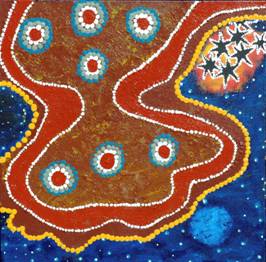 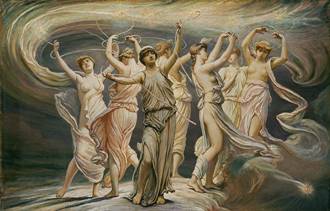
In Same Stars Different Dreaming Bronwyn tell two Seven Sisters Stories which are about the small but well-known star cluster also called the Pleiades. Josie’s story is her Thoogoorba from the Western Desert country and Goldfields of WA. It vitalizes her country and people with its fiery, creative Desire – a Desire that binds together and transforms itself from spirit into matter.
We non-indigenous Australians are far from the country, which might hold our own Indigenous stories. What stories we remember are no longer rooted in a place in which we have an experience of living. But the old Greek stories did take place in country. Bronwyn has researched the Pleiades/Orion story from Greece, which could be thought of as forming part of our Western cultural dreaming.
Both stories are about the same Star Women, different yet sharing essential human themes. One story belongs in this country. The other which arrived here, also having mythic links to ancient creation beings, carries the imprint of cultural change as the arrival of wine and the Bronze-age with its inventions of mining, smelting and the metalsmithing arts, impacted on the people and country of Ancient Greece.
Josie and Bronwyn unfold the two stories with images of Seven Sisters paintings by Josie and her family, and images of the main characters from the ancient Greek story. And they think about how big cultural stories work, drawing on Indigenous and Western wisdom.
Jung believed that these big stories live in us – and we live them out. Josie and Bronwyn share their experiences and observations from their numerous trips to Kalgoorlie – of what might be happening as these stories meet in the Goldfields, the heart of the mining industry in Western Australia.
Josie Wowolla Boyle is a prominent Indigenous elder in WA. She is a Wongatha woman who grew up in the Goldfields of Western Australia. A trail-blazer for Indigenous cultural communicators, Josie has been sharing her culture in Perth and throughout the state for fifty years. She is loved by children and adults alike for the warmth and generosity she brings to her work, much of it oral story-telling – visiting schools, tertiary institutions and prisons. She is often called upon for cultural workshops with health workers, mining companies and teachers.
In addition to compiling and publishing A Wonghi-English Dictionary with her husband, John, Josie wrote a short film, Talkabout Walkabout for which the director, Gary Cooper, received an honorable mention at the 7th Annual imagineNative Film and Media Festival in Canada. Many of Josie’s stories feature in the animated TV series The Dreaming by Aboriginal Nations Australia. In 2009 she performed and narrated the Language in Motion series of Wongatha educational DVDs. Also a singer and painter, Josie has made numerous CDs and with family, exhibited Seven Sisters at the Kings Park Aboriginal Art Gallery in 2008. Josie’s first children’s story Bubbay was published by Magabala last year and her second story, Spotty Dotty Lady is due for release later this year.
Bronwyn Goss is an artist with an interest in big cultural stories. She taught Jewellery and 3D Design for many years in the School of Art at Curtin University and served on the Visual Arts Crafts Board of the Australia Council. In 2011, a cultural exchange with three artists from Perth and senior women artists from Warburton culminated in an exhibition, The Stringmakers, held at Tjulyurru Art Centre, Warburton and at the Holmes a Court Gallery in Perth. Bronwyn’s work is represented in six Australian public collections.
While living in Canberra (1998-2004) she was an active member of A Chorus of Women, participating in the creation and performance of Websong and On the Edge of Silence. She also volunteered on The Bringing Them Home Oral History Project at the National Library and did a Masters in Analytical Psychology at the University of Western Sydney - which amplified for her the cultural significance of stories.
In recent years she has been collaborating with Josie Wowolla Boyle around the significance of big stories and their importance to us, both individually and culturally.
-----------------
Josie and Bronwyn’s collaborative work, Same Stars Different Dreaming was first presented to the National Conference of the Jewellers and Metalsmiths Group of Australia in 2010 and since then to FAHCSIA, the Curtin University Sustainability Policy Institute, the WA Jung Society and numerous other groups. It also formed the conceptual basis of the inaugural performance of Ochre Contemporary Dance Company (constituted of Indigenous and non-indigenous dancers). In 2012 Josie and Bronwyn were the story consultants for this performance called, Diaphanous, staged at the Studio Underground at the State Theatre of WA.
Friday 4th October 2013 8pm
Kaye Gersch
"The Handless Maiden:
Implication for a Fairy Tale for Women and Men Today"
This talk is based on the final chapter of Kaye’s doctoral thesis. Although this Tale is essentially about the predicament of women, men are equally represented, and transformed.
The feminine body, that of the Handless Maiden, is mutilated at the beginning of the narrative, and healed by the end. This suggests that the patriarchal assumptions which initially wounded her have been made conscious, and healed through the achieving of her subjectivity/individuation. This is done through different feminine modes of restoration - meditation, solitude, prayer, virginity. The final achievement, as posed by the narrative, is a coniunctio. This coniunctio can be read on various levels; within an individual psyche, between men and women, and as commentary on gender relations in our culture. In addition to Jungian thinkers, Kaye calls upon the work of contemporary French philosopher Luce Irigaray.
This creates a unique and very contemporary analysis, which goes to the heart of many of our most perplexing questions, especially as women. Both men and women are welcome to this talk. Attendance is essential for the women joining the workshop, as all the foundational concepts are covered in the talk, and not repeated in the workshop.
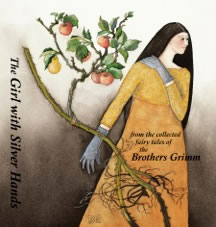
Kaye Gersch is a psychoanalytic psychotherapist of more than 20 years standing, and has recently completed a Doctorate at the School of History, Philosophy, Religion and Classics at the University of Queensland in Brisbane.
The topic of her thesis is The Feminine in Body, Language and Spirituality, and is multidisciplinary, encompassing philosophy, theology and depth psychology. Kaye lived in Perth for many years, but for the last 14 years has lived in Cairns.
~0~
Saturday Workshop: 5th October 2013,
10am - 4pm, workshop for women
Kaye Gersch
The Handless Maiden Workshop:
Healing through the Feminine (for women only)
This is a story about the place of women in contemporary patriarchal culture. But haven’t women been liberated? Hasn’t this already been achieved? What else can be said about the feminine?
You will be surprised to discover what this fairy tale can reveal for your personal psychology, and autonomy.The role of maiden/young queen, virgin and angel are archetypes of the feminine with absolute relevance for us today, as initiators into a more conscious way of being ourselves as women. Are we a father’s daughter – the daughter of the patriarchy? Or a mother’s daughter, and if so, what do we mean by that? Are we virgins? What might it mean to be a virgin at 60? How would an angel guide us and what might we mean by ‘angel’?
With these feminine archetypes guiding us, we will explore the meaning of being without hands (or with silver hands) in our everyday lives.Our own personal feminine genealogy will provide some guideposts for this journey.This workshop is experiential and participatory. It is essential that you have read the fairy tale before the workshop, and have attended the talk on the same subject the night before, as this will give the background for our exploration.
Kaye Gersch is a psychoanalytic psychotherapist of more than 20 years standing, and has recently completed a Doctorate at the School of History, Philosophy, Religion and Classics at the University of Queensland in Brisbane.
The topic of her thesis is The Feminine in Body, Language and Spirituality, and is multidisciplinary, encompassing philosophy, theology and depth psychology. Kaye lived in Perth for many years, but for the last 14 years has lived in Cairns.
Entrance to the Saturday workshop is $40 for members and $50 for non-members.
All women are welcome!
~0~
The Tale
A miller has fallen into poverty. One day he meets an old man in the forest. The old man says, “I will make you rich if you promise to give me what is standing behind your mill.”
The miller assumes the old man means the apple tree, so he gives his promise tothe old man. The old man then says, “I will return in three years and takewhat you have promised to me,” and then vanishes.
When the miller returns home, his wife asks about his newfound wealth. She then tells him that the old man must have been talking not about their apple tree but about their daughter, and that the old man must have been the devil.
The miller’s daughter is a beautiful, pious girl, and she spends the next three years in devout worship. At last the day arrives when the devil comes to claim the girl. That day, she washes and then draws a circle around herself with chalk. The devil appears, but he cannot come near her. Angered, he snatches the water away from her so she cannot wash herself again. When
he returns the next day, the girl has wept on her hands, and they are now quite clean. She uses the tears in her palms to clean herself, and the devil still cannot come near.
Furious, he orders her father to cut off her hands. The miller is shocked and tries to refuse. However, the devil threatens him by saying that, if he does not sever his daughter’s hands, his own life will be endangered. So the miller goes to the daughter and begs her to allow him to cut off her hands. She replies, “Dear father, do with me what you will, for I am your child.” Then she
allows her father to cut off both of her hands. However, when the devil returns, she has wept so much on the stumps where her hands once were that they are still clean. Thus he gives up his intention to seize her for himself.
The girl’s father wants to continue to provide for her, but she refuses. She has her arms bound behind her back and then sets out on a journey. The daughter walks all day and stops at nightfall. She has arrived at a royal garden, and in the moonlight she sees that the trees there are covered with fruit. However, she cannot enter because the garden is surrounded by water.
She is very hungry, so she begins to pray. Suddenly an angel appears before her and makes a dam in the water. After a short while, the moat dries up, and the girl is able to enter the garden. There, using only her mouth, she eats a pear. However, the king who owns the garden knows exactly how many pears he has on each tree, and when he realizes the next day that one is
missing, he questions the gardener. The gardener tells him that a spirit without hands had been led to the garden by an angel and that she ate the now-missing pear with her mouth. That night the king decides to watch and takes a priest with him. As on the night before, the maiden comes out of the thicket and begins to eat a pear. The priest comes forward and says, “Do you come from heaven or Earth? Are you a spirit or a human being?” She says that she is an abandoned human. Hearing that, the king says that he will not forsake her, and he takes her with him into his royal palace.
He loves this beautiful, pious girl with all his heart, and he has silver hands made for her and then makes her his wife. After a year, the king has to go to war. Because his young wife is with child, he asks his mother to come and care for her and to send him a letter when his wife gives birth. When she delivers a beautiful son, the king’s mother immediately sends him a letter with the good news, but the messenger falls asleep by a brook along the way. While the courier is sleeping, the devil, who is still angry about losing the young woman, exchanges the real letter for another one that states that the young wife has given birth to a monster.
When the king receives the letter, he is shocked but sends a message back saying, “Please take care of my wife until I return.” However, the messenger—once again fatigued from the journey—falls asleep in the same place while on his way back to the paace. The devil once again exchanges the king’s letter with a message that orders, “Kill my wife and child.” The king’s mother does not believe the letter and sends another letter to the king.
However, the devil plays the same trick again. Finally the king’s mother receives a letter ordering her to save the queen’s eyes and tongue to prove to the king that she has been killed. The elderly mother pretends to have killed the queen and her baby son by killing a deer, removing its tongue and eyes, and saving them. She then tells the queen that she and her baby son have to leave the castle.
And so, with the baby bound to her back, the young queen weeps piteously as she departs from the castle. The young queen goes into the forest. She prays. An angel appears and leads her to a little cottage, over the door of which was a shield inscribed with the words: “Here may everyone live freely.” A young virgin, as white as snow, comes out of the house to meet the queen and the child, and she sees to their every need.
Seven years pass. One day, as the young queen bends over a stream to drink, the child falls
from her back into the water. She begins to shriek and a spirit appears and asks why she does not rescue her child. “Because I have no hands”, she replies. “Try”, says the spirit, and as the maiden plunges her arms in the water, reaching for her child, her hands regenerate then and there, and the child is saved.
Soon after the young queen has left the castle, the king returns from the war, but he is quite surprised to find that his wife and baby are not there waiting for him, so he asks his mother where they are. The elderly woman replies, “You are such a terrible person. I did exactly as you ordered me to do,” and she shows him the two letters that the devil had sent her. The mother is
shocked when she sees the anguished expression on the king’s face; she realizes that the letters are not from him. She then tells him that his wife and baby are still alive. The king decides to go looking for his wife and offspring and says, “I will not eat or drink until I find my wife and child.”
The king spends seven years looking here and there for his wife and child. Finally he comes upon a forest, and there he finds a cottage. A white angel comes out of the house and invites the king inside. Deciding to rest there, he lies down and covers his face with a handkerchief. The angel calls the queen and her son, named Sorrowful, and they look upon the king where he is resting. The handkerchief falls off of the king’s face, and the queen tells her son to pick it up. “Sorrowful, pick up your father’s handkerchief and cover his face again.” Upon hearing these words, the king wakes up and says to the young queen, “Who are you?” “I am your wife, and
this is your child, Sorrowful,” she answers. The king sees the young woman’s hands and cannot believe what she has said. “Thanks to the grace of God, my hands have grown back.” When the angel brings the silver hands that the king had made for the queen, he finally believes that he has found his longlost wife and child and is overcome with joy.
The three of them return to the home of the king’s elderly mother, and the
king and his wife are married once again. They live happily ever after.
Friday 6th September 2013 8pm
Marion Woodman - DVD and Discussion
Marion Woodman (born August 15, 1928) is a Canadian mythopoetic author and women's movement figure. She is a Jungian Analyst trained at the C. G. Jung Institute in Zürich. She is one of the most widely read authors on feminine psychology, focusing on psyche and soma.
Marion is also an international lecturer and poet. Her collection of audio and visual lectures, correspondence, and manuscripts are housed at OPUS Archives and Research Center, in Santa Barbara, California.
Among her collaborations with other authors she has written with Thomas Moore, Jill Mellick and Robert Bly. Her brothers are the late Canadian actor Bruce Boa and Jungian analyst Fraser Boa.
On November 7, 1993, she was diagnosed with uterine cancer. The following two years of cancer treatment she recorded in a journal, which later was published as Bone: Dying into Life. She was listed in Watkins' Mind Body Spirit Magazine in 2012 as one of the 100 Most Spiritually Influential Living People.
Friday 2nd August 2013, 8pm
Dr. Richard Barz
"C.G. Jung and Vallabha:
A Portentous Encounter"
In the course of a meditation on the nature of God in Memories, Dreams, Reflections Jung says “if the Creator were conscious of Himself, He would not need conscious creatures” and in a seminar given in 1930-1934 he stated that “the animus and the anima should function as a bridge, or a door, leading to the images of the collective unconscious”.
400 years before Jung, the Hindu philosopher and religious leader Vallabha based his thought on two concepts eerily similar to Jung’s views on God, the anima and the animus. Vallabha held that the supreme being Krishna can only know himself through human consciousness and that in the foundations of his or her being every individual person is both female and male.
We’ll never know if Vallabha would have accepted himself as an early Jungian, but we can say for sure that Jung would have been ambiguous about being a late Vallabhan. On the one hand, Jung was so fascinated by Indian philosophy that he gave a series of lectures on Kundalini Yoga in 1932. On the other hand, in his 1934 article “Archetypes of the Collective Unconscious” he was highly suspicious of Western attempts to adopt Asian spiritual practices, saying: “We have let the house our fathers built fall into decay, and now we try to break into Oriental palaces that our fathers never knew.”
Did Jung and Vallabha just happen to hit upon vaguely similar notions once or twice or were their ideas based on an intuitive understanding of the same truth? This question is the subject of Dr. Barz’s talk. What does the answer to that question mean for us today in a world that is global, with no east or west? Perhaps our discussion after the talk will throw light on that.
Richard Barz, until recently Senior Lecturer in Hindi and Urdu at the Australian National University, has spent the last five decades reading the works of the Hindu philosopher Vallabha and discussing them with his followers. Among Richard’s writings on Vallabha is "The Bhakti Sect of Vallabhacarya" (1976 and 1991) and a series of articles in "Brill’s Encyclopedia of Hinduism" (2010-2012).
Friday 5 July 2013, 8pm
Dr David Russell
"The relevance of Jung's notion of 'soul'
in today's clinical practice"
Jung often express his understanding of soul as an experience, one that over time has a sense of familiarity, almost friendship. Based on a learned attitude to particular experiences, especially suffering, soul is dynamically linked to imagery and emotions. When attending to these archetypal images, and the emotional drivers embedded in them, a pathway into action unfolds ... a process that is very psychologically satisfying.
Dr David Russell BSc (Hons), PhD Psychology, Registered Psychologist, has completed both his undergraduate and postgraduate work in the School of Psychology at the University of Sydney. After a period in private practice he took up an academic position at the University of Western Sydney and subsequently was responsible for co-founding the Master of Analytical Psychology degree (a course-work program in Jungian studies). David is currently in private practice in Darlinghurst where he offers psychodynamic psychotherapy. He is the current President of the C.G. Jung Society of Sydney.
Friday 7 June 2013, 8pm
Jennifer Hume & Jessica Rose
"Embodied Imagination"
Jennifer and Jessica are returning this year to tell us more about Embodied Imagination, a creative way of working with dreams and memories, pioneered in the late 1970s by Robert Bosnak, a Dutch Jungian analyst. It is a radically new technique, based on neuroscience and on the phenomenological work of Carl Jung and can be used in many different modalities including art, drama, personal experiences of place, illness and disease, counselling and psychotherapy.
Embodied Imagination gives each of us an opportunity to experience imagination in the body through images, feelings and bodily sensations. It captures transitory and ephemeral images - the beautiful, sad, frightening, grotesque, comforting, the familiar and unfamiliar. In a state of consciousness between waking and dreaming, through empathic observation and mimicking, we can enter the images and explore them from a variety of perspectives focussing on feelings and sensations manifested in the body.
This stimulates unfamiliar, as opposed to habitual, states of consciousness and helps us to become aware of what is hidden in the psyche. Imagination moves swiftly, but in this process it is slowed down to become more focussed and dense and, therefore, more able to be embodied. This leads to a re-organisation of conflicting elements into a more complex pattern which expands both our awareness and psychological flexibility and allows for something new and profoundly transforming to unfold.
Jennifer Hume is a counsellor who also consults for ACT community agencies. A part-time lecturer in the Community Counselling program at Canberra University (1993 -2004), she designed and taught the inaugural Graduate Certificate in Counselling Supervision course (2004–2008). Jennifer offers professional supervision to a wide variety of professionals, workers and groups and training and support in group facilitation skills, communication and counselling skills, professional boundaries, supervision and self-care. She has a long-term fascination with dreams and a more recent growing interest in bodywork.
Jessica Rose is a counsellor and psychotherapist who also facilitates courses in mindfulness and finding meaning in the second half of life. With a background including training in psychiatric nursing, psychology, sociology, TA– Gestalt, psychodrama, NLP, psychotherapy and dreamwork, Jessica taught the Crossroads transformational courses in Canberra (1990 - 2008) and has developed and taught numerous other personal and professional development courses. She co–facilitates dream groups with Jennifer and has worked as a life coach and a communications consultant.
Friday 3 May 2013, 8pm
Professor David Tacey
Jung, Gods and Diseases
Jung was at least a hundred years ahead of his time in terms of finding links between psychology, spirituality and medicine. In his own day, his insights seemed oddly unscientific to many observers, or at least against the mainstream.
But medicine today is beginning to realise that the human person is a complex field which includes mind, body, spirit and soul. Psychiatry and medicine are now ready to move in this holistic direction, but Jung is sometimes forgotten in the present interest to make connections between psyche, body, and symptoms. This talk outlined Jung's contribution to the study of mental illness and physical disease, and explores his concept of archetype in relation to ancient traditions of shamanic medicine.
Dr David Tacey is Professor of Humanities at La Trobe University, Melbourne, where he teaches courses on Jungian psychology, literature and cultural studies. David has written 14 books, of which 8 are specifically on Jungian psychology. His most recent books are Gods and Diseases (2011), The Jung Reader (2012), and The Darkening Spirit: Jung, Spirituality, Religion (2013). Other books on Jung include How to Read Jung (2006), The Idea of the Numinous: Contemporary Jungian and Psychoanalytic Perspectives (2006), and Jung and the New Age (2001).
David gives short courses at the summer school of the C. G. Jung Institute in Zurich and is on the editorial boards of several international journals of Jungian studies. His books have been translated into numerous languages, including Chinese, Korean, Spanish and French.
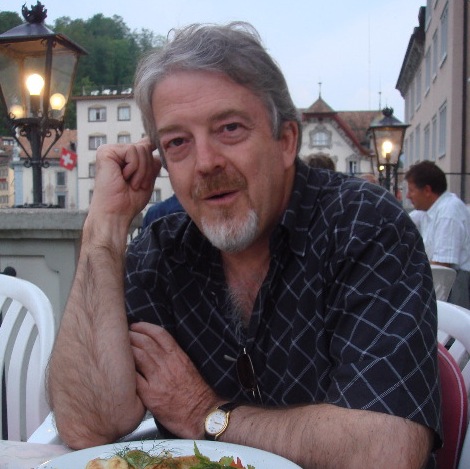
5 April 2013, 8pm
Terence McBride
"Reflections on the Red Book of C.G. Jung"
In December 1913 C.G. Jung let himself descend into the imagery of the unconscious and pursued these inner images for some years, in a process he later called “active imagination”. He confronted powerful factors in the unconscious, which naturally personify themselves, and recorded his inner experiences in calligraphic writing and paintings in a red leather folio volume which he called the Liber Novus (New Book) or The Red Book.
In the 2009 published and beautifully reproduced Red Book, we are privileged to witness his primary experience of the unconscious. Coming to terms with his inner feeling-toned images transformed him and became the prima materia for a lifetime’s work. This experience became the basis of his psychology and the new model of psychotherapy practice which he pioneered.
One can see not only the seeds of recognisable future developments in his psychology in it, but also revelations of his own process and a glimpse of the wellsprings and sources from which his life and work grew.
Terence McBride has a background in theology, and trained at the C.G. Jung Institute Zurich where he obtained the post-graduate diploma in Analytical Psychology in 1979. He has lectured widely on Jungian psychology in Australia over the years. He is a former president of the C.G. Jung Society of Sydney and works as a Jungian analyst in private practice in Sydney.
Friday 1 March 2013, 8pm
Dr John Woodcock
"The Hidden Legacy of C.G. Jung"
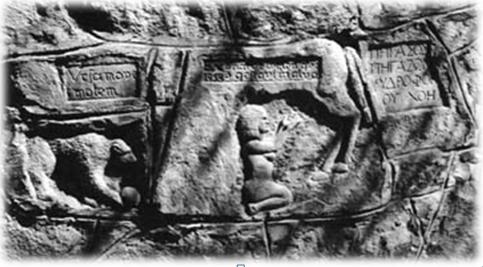
When we reflect on the legacy of C.G. Jung fifty years after his death, it is easy to acknowledge his lasting influence in disciplines such as psychology, mythology, symbology, alchemical studies, psychotherapy, and even medicine and law. But there is yet another contribution he has made to our modern culture which may be called his hidden legacy. This legacy has remained virtually mute since Jung carved a remarkable and enigmatic bas-relief into the wall of his Bollingen retreat, one year before he died.
In this talk John Woodcock proposed that this hidden legacy is also a gift from Jung to us, perhaps now ready to be released in these urgent times when there is so much fear in relation to the unknown future. John has previously shown in his doctoral dissertation that this pervasive “fear of the apocalypse” reflects the imminent demise of our present-day structure of consciousness and, by regarding Jung’s carving as a dream or soul phenomenon, John will describe Jung’s intuition of a new structure of consciousness forming in the depths of soul, personified by Jung as The Coming Guest.
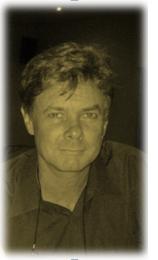
John C. Woodcock holds a doctorate in Consciousness Studies (1999). His thesis explores our fears of the unknown future as an intimation of a transformation in consciousness pressing upon us from within the depths of soul.
John’s earlier books, Living in Uncertainty, Living with Spirit, Making of a Man, Initiation through the Divine Mother, and Transformation of the World describe his inner journey in terms of a modern initiation into this new structure of consciousness. His later books, The Coming Guest, The Imperative and Hearing Voices, all explore the outcome of this process more fully in terms of Jung’s image of a mouthpiece, as which we each may give expression to hints of the unknown future through the medium of art.
John’s latest book, Animal Soul establishes a firm theoretical ground for the claim that the soul is urging us towards the development of new inner capacities that he calls the augur-artist mind – the mind that can discern and artistically bring forth hints of the unknown future into reality.
John lived and studied in the USA for 24 years before returning to Australia in 2003. He currently lives with his wife Anita in Sydney, teaching, writing, and consulting with others about their soul life. He is also a practicing Jungian therapist.
John’s new book, Animal Soul, is freely available in PDF at his website: www.lighthousedownunder.com or in hardcopy from Amazon.com.
He may be contacted at jwoodcock@lighthousedownunder.com
Friday 1 February 2013, 8pm
Craig San Roque
"Persephone's Dog"
For those who like the ancient stories, the Eleusinian myth of Persephone is a favourite. This version was composed in September 2012 for the Nomikos Jungian conference 'Ancient Greece; Modern Psyche' held at Thira Santorin where Craig was a speaker along with Virginia Beane-Rutter, Donald Kalsched, Tom Singer, Jules Cashford and others; including a mesmeric film, 'Penelope', set in Croatia, by Australian Ben Ferris and drawn from Homer's Odyssey.
In his version of Demeter /Persephone, Craig takes us into an atmosphere that combines current post-Intervention events in central Australia, transitions from hunter gatherer civilisations towards farming, the serenities of Delphi, and pressing consternations of a climate changing beneath one's feet – as seemed to have occurred in old Europe some millennia ago. (Craig says, 'The intertwined themes will be familiar to the members of the Chorus of Women and, indeed, my version is indebted to the inspiring examples of activity of the Canberra Chorus of Women'.)
This is a good story which can resonate for an individual psyche as a developmental myth as well as at a more collective level around issues of civilisations in transition
Saturday 2 February 2013, 10am-4pm: Workshop
Yarralumla Uniting Church hall,
Denman Street Yarralumla
Craig San Roque
"The Kore Story - or Persephone's Dog
Demeter and Persephone Retold"
***
|